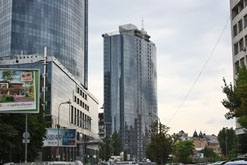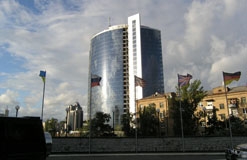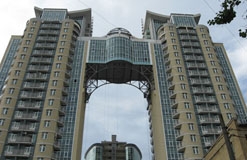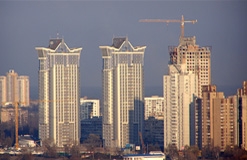Reverberation Time Calculation
| |
|
  |
| |
|
|
Reverberation time (T, s), a concept introduced by W.C. Sabine at the end of 19th century, remains one of the most important acoustic properties of the room. Standard reverberation time is defined as that time required for the sound-pressure level in a room to decay 60 dB after a source stops generating sound. It characterizes degree of boominess of the room.
In general, shortening of reverberation time leads to better clarity and speech articulation, i.e. increases the degree of acoustic comfort. Shortening of reverberation time is achieved by using sound absorbing materials on the walls, floor, and ceiling.
This acoustic calculator designed to estimate reverberation time of the room depending on its purpose, and to preselect required quantity of sound absorbing materials. Besides using internal database of sound absorbing materials, the program allows to enter sound absorption coefficients of any arbitrary materials taken from reference books.
Sound absorption coefficients table
Calculations with Reverberation time calculator are based on online input. Results are displayed on a diagram. Calculation is performed in accordance with Eyring's formula:
Т (sec) = 0,163*V / −ln(1−α)*S
V – volume of the room, m3
S – total surface area of the room, m2
α - average absorption coefficient of room surfaces
Calculated value of reverberation time is graphically compared to recommended (optimum) values are in compliance with international standards:
DIN 18041 Acoustical quality in small to medium-sized rooms, 2004
EBU Tech. 3276 – Listening conditions for sound programme, 2004
IEC 60268-13 (2nd edition) Sound system equipment - Part 13, 1998
Please read our rights of use |





























